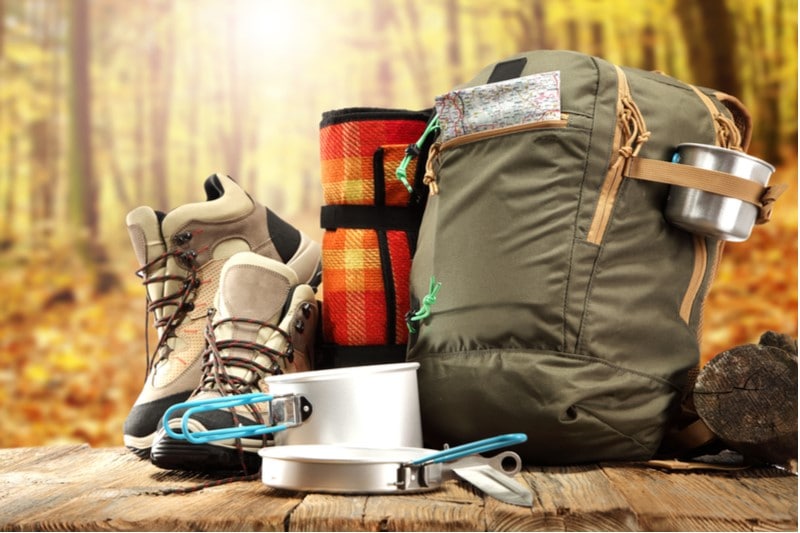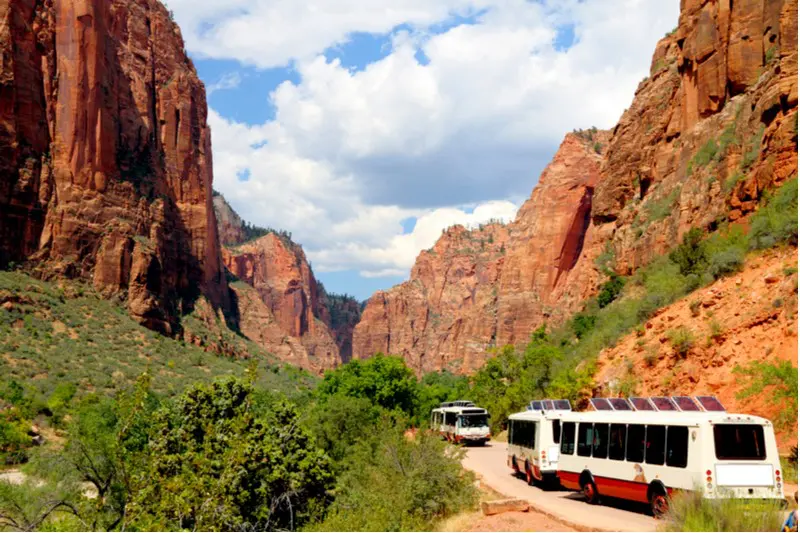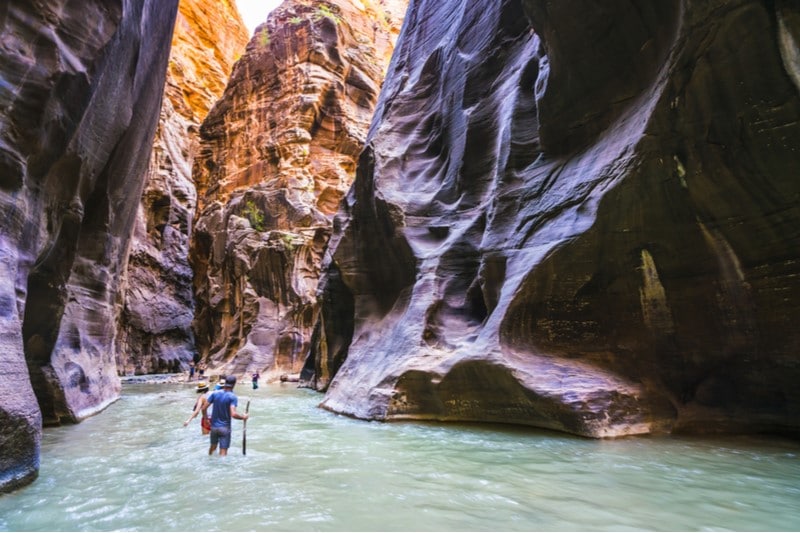What is it about the desert that’s so intriguing?
Maybe it’s the allure of creepy crawlies that seem to thrive in a barren wasteland. Or maybe you’re looking for beauty in a symbol that’s the polar opposite of what we consider appealing.
In truth, there is an incredible amount of beauty in the desert. And that’s probably why millions of people visit Zion National Park each year.
And while we’re talking about Zion National Park, if you’re in the know, you might be on a mission to see the hidden petroglyphs for yourself.
Most people who visit this national park don’t even know the petroglyphs are there. In Petroglyph Canyon, you’ll find two panels that feature over 150 petroglyphs created by ancient cultures. If the massive cliffs and astounding view of nature isn’t enough to humble you, imagine how you’ll feel when standing before the writings of people who stood on the same ground possibly 7,000 years earlier.
Regardless of the reason you’re visiting, you’ll want to make the most out of your visit.
7 things you should know before you visit Zion national park
1. Pack for adventure
If there’s one thing that’s certain, this vacation will surprise you. It will test your limits and challenge your abilities. But you won't have this type of life-changing experience if you aren't prepared.
Without the right gear, you might not be able to take advantages of all the adventures available to you at Zion National Park.

So if you want to make the most of your trip, be sure to pack the following things.
- Water shoes – Even if you aren’t usually one to gravitate towards water for your adventuring, bring water shoes. If you don’t already have them, get a pair. It’s true that there are a lot of water activities at Zion (kayaking, canoeing or river rafting to start), but you’ll also want water shoes to make your way through the Narrows.
- Major sun protection – You know well enough to bring the sunscreen, but in the desert, you're going to need a bit more than your typical SPF. Definitely pack and use the sunscreen, but also bring other things to help shield your skin from the sun. Bring a floppy sun hat and sun protective clothing. And in the event you do get a sunburn, you'll want some aloe and moisturizer. Yes, there will be some aloe in the desert, but if you want it on demand, you'll need to bring your own supply.
- Blacklight flashlight – If you’re camping at Zion National Park, bring a blacklight flashlight. This is one of the few specialty items you’ll want for your trip, but it’s an important one if you’ll be outside after dark. With a blacklight flashlight, you’ll be able to spot scorpions as they come out to feed at night. But if you’re not familiar with scorpions, you should also know that a scorpion sting usually isn’t life-threatening. In fact, most scorpion stings are about as painful as a bee sting. It’s not something you want, but it’s something you can handle. There’s only one scorpion in this area that can cause a severe reaction that will begin with severe pain at the site of the bite. If you think you’ve been bitten by a bark scorpion, get help as soon as possible.
- Warm clothes – If you're unfamiliar with this area, you may be tempted to bring nothing but shorts and tank tops. But it can get downright chilly in the overnight hours. Temps in this area can fluctuate by 30 degrees within 24 hours, so be prepared with clothing for cooler weather.
- Rain gear – When you’re adventuring in Utah, be prepared for anything. It can rain in the desert. And, in fact, if it does rain, you may experience a serious downpour for a short time. This is the kind of rain you want to prepare for, so bring a poncho at the very least.
- Rock climbing gear – If you’re not a climber, your trip to Zion National Park probably isn’t the time to start. But if you’re experienced, be sure to bring your gear. The climbs you’ll find here aren’t like any others you’ve experienced. Most of the sandstone cracks are parallel, so be prepared to use your cams. You’ll also need a few offset nuts for some routes, especially Desert Shield.
- Bug spray – This one is a bit on the captain obvious side, but if you want a comfortable trip, bring plenty of bug repellant. This isn’t an item you want to forget.
- Lots of water – Again, this tip falls into the obvious category, but you can’t underestimate how much water you’ll need in the desert, especially when you’re exerting any level of energy.

2. Free shuttles are often the best way to get around
While a trip to Zion National Park offers a great way to test out your spacious and new SUV, driving your own car isn’t always the best way to get from point A to point B.
Instead, consider parking your ride and taking one of the free shuttles. During peak times, the free shuttle is the only way to experience Zion Canyon Scenic Drive. When the shuttles are running, passenger vehicles aren’t even allowed on the scenic drive.
3. Take a ranger tour
When you’re traveling to a new city, who would you choose to show you around? You’d probably want a local who is intimately familiar with the area. Maybe it’s someone who has lived in that city for their entire life.
Well, when it comes to National Parks, park rangers are like those in-the-know locals. If you think about it, we all spend more of our lives at work than we do at home. It’s a sad reality, but then think about how much time rangers spend in the park. This is their job. And in most cases, it’s also their passion.
These are the informed “locals” you want to learn from. Rangers can tell you the ins and outs of the park from their own experience. And each ranger tour is likely to provide a different flavor of Zion National Park.
Try to schedule a ranger tour on your first day here, so you can get a full picture of the park before you start your adventure. You're likely to learn valuable information that can help you make the most of your visit. And if you have any questions about your stay here, the park ranger is the perfect person to ask

4. Best time to visit Zion National Park
You can visit this national park at any time of year, and it’s open 24 hours a day. But the most popular months to visit are April through October. During this time, you can catch a shuttle bus to take you through Zion Canyon.
The best time to visit will really depend on what you're looking to get out of your visit. If you're planning to go to see the sights, take a tour and not exert a ton of energy, you may have a better time visiting in the offseason, which is winter. During this time, you'll deal with fewer crowds and may be able to enjoy your visit without long lines.
If you’re planning to go for a hike or climbing, fall is the best time to go to Zion National Park. The spring and summer months can be difficult for hiking and other outdoor activities, but they aren’t completely out of the question. Just keep in mind that if you do visit this park in the summer, daytime temperatures can be intense.
5. Tips for the Emerald Pools
The desert oasis has become a symbol of hope and inspiration, but for most of us, it’s just a symbol. If that describes you, you should definitely visit the Emerald Pools at Zion National Park. These pools are a literal oasis in the middle of the desert.
You’ll have to hike to the Emerald Pools, but it’s a relatively easy hike that most people can handle. In fact, many visitors bring the entire family (kids included) to the Emerald Pools.
On your way, you’ll pass through a short collection of trails that will bring you to a stream surrounded by lush vegetation that seems to roll down from the cliffs. There are several pools here where you can kick back and enjoy the view around you – and it’s a spectacular one.
You’ll find the Emerald Pools across from the Zion Lodge, so it’s a popular hike. You may think of your desert oasis experience as a personal and private one, but if you’re visiting in peak season, the Emerald Pools can get quite crowded.
They're still worth the visit but manage your expectations.
The entire hike will take between 2 and 4 hours and can be enjoyed year round. Still, you may want to avoid summer because of the hot weather and lack of water in the falls.
Lower emerald pools
If you’re traveling with seniors, small babies or anyone with a physical disability, you can still enjoy the lower Emerald Pools. You’ll get here within a half mile and will see two waterfalls that lead into the lower pools.
Middle emerald pools
The trail gets a bit more difficult when you leave the lower Emerald Pools. Here, it gets a bit steeper, so this may not be best for people who aren’t fit enough. The middle pools are where the waterfalls are formed.
Upper emerald pool
You’ll find the upper Emerald Pool at the base of a 300-foot cliff. Since not everyone will go to the upper Emerald Pool, it’s a bit more relaxing here. This is a great place to stop for a break before you start your journey back to the Zion Lodge.
Overall, this is an amazing hike that's accessible to almost everyone who visits Zion National Park. But don't get the wrong impression. You can't actually swim in the Emerald Pools. At least, not anymore. With so many visitors on this hike every day, a lot could go wrong. That's probably why they've fenced off the water and put up the "keep out" signs. As nice as it would be to drench yourself in a desert oasis, you can’t. So be sure to bring lots of water to keep yourself hydrated from the inside out.
6. Tips for visiting Weeping Rock
Second, to the Emerald Pools, Weeping Rock is probably the most popular hike in Zion National Park. Weeping Rock is the shortest trail in the entire park, and that's appealing for many. Even if you're an avid hiker, this is a great hike to squeeze in when you don't have a lot of time.
You can take this hike any time, but you should know that some parts of it may be closed in winter.
Take the steps by the hiker’s bridge to access the stream below.

7. Begin in the Narrows
After your ranger shuttle tour, you may want to head straight to the Narrows. It’s a great way to dive into the adventure and uniqueness of Zion National Park.
And in order to get started, you have two options. Start from the bottom or start from the top. You should know, though, if you start from the top, you’ll need a permit.
To get to the Narrows (bottom), you'll take the 1-mile paved Riverside Walk that ends at a rocky beach. Here is where your water shoes come in handy. You've got to get in and start wading up the Narrows. This first section is a ½ mile long, but it can be tiring to hike against the current. This is why many people with small children turn around at Mystery Falls. If you continue, you’ll experience Wall Street and Big Spring, and the entire hike will take about 5 hours.
You should know that there are only two ways out of the Narrows, the way you came and the way you’re going. You can’t opt out once you start the hike unless you turn around. This is also why it’s important to check the weather. The Narrows can be dangerous in flash flooding conditions, and if you’re there, you’ll be stuck.
If you want to make the most out of your trip to Zion National Park, follow the tips outlined here, and always keep an eye on the weather.
Happy trails!
